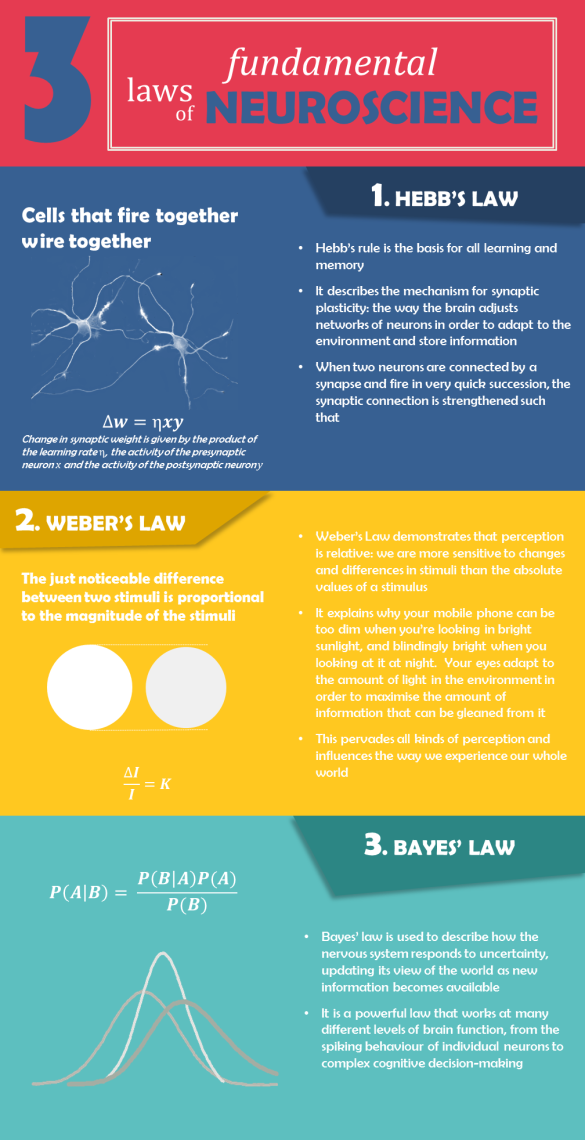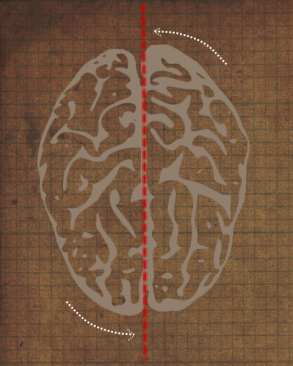Have you ever used your fingers to help you count? Have you ever drawn someone a map to explain the way? Have you ever drawn a mind map and found it helped you organise your thoughts? All these things are examples of a very clever adaptive technique of off-loading cognition onto the environment, something that a set of recent experiments demonstrates very nicely.

We're not this.
Using the things around you can make it easier to think, by effectively increasing cognitive capacity – like an external hard-drive. This is what you’re doing when you draw a diagram to make something clearer. Your brain doesn’t operate as a self-sufficient processor; it is situated in the context of whatever is around it, and it makes things very efficient and saves memory capacity by using the world to its advantage.
Writing is possibly the best example of this aspect of embodied cognition, not least because as a culture we are so dependent on it. When you know something is written down for you to look at again, you don’t need to remember it in so much detail, which leaves you free to turn your attention to other things. In fact, societies that are illiterate generally have a better memory (although I can’t for the life of me find a reference for this), because they have to do without the convenience of writing down important things.
So we are discovering more and more that the mind is not a self-contained instrument that is detached from the world, the way our intuition usually says it is. Cognition and the environment are intimately connected. When Descartes said that the mind and the body were separate substances, he wasn’t just wrong – he was asking the wrong question entirely. You can’t meaningfully separate them, because the evidence to date points to the environment as a functional extension of the brain. This is what is espoused by the theory of embodied cognition, which says, in essence, that the basis of all cognition is perception and action and that this is the context in which the mind should be understood and studied. Offloading cognition onto the environment is one of the six views of embodied cognition.
The latest research on this topic brings it up to date by looking at online information and other influences of computers on cognitive processes. Researchers at Columbia have investigated the effect of using computers on people’s memory, by getting them to type items of trivia (like, “An ostrich’s eye is bigger than its brain,”) onto a computer. In one experiment, half the participants were told that what they typed would be saved; the others were told it would be deleted. When they had finished, they wrote down as many of them as they could remember. (I’m sure you can guess what the result was by now.) The ones who were told their work would be saved remembered less, because they had offloaded some of their memories onto the computer. It didn’t make a difference whether they had been explicitly told to remember them or not; so it wasn’t just that of the participants consciously thought they would need the information later. The simple fact is that our brains make less of an effort to remember things that we have other sources for.
The paper is published in one of the most respected scientific journals, Science, and details four experiments the authors carried out relating to how computers and the internet affect our thoughts. Two of them demonstrate embodied cognition; in the second (very revealing) experiment, they looked at the source of the information. Participants typed facts into the computer, as before, but were lead to believe that they would be able to access the folders where their entries had been saved during the memory test.
This time, for one third of the statements they were told that their work had been saved.
For another third, they were told which folder it had been saved in.
And for the final third of entries, they were told it had been erased.
When their entries had been saved, participants’ memory for the trivia was worse, but their memory for whether and where it had been stored was better. Tellingly, when they couldn’t remember what the statement was, they were more likely to remember where it was saved. They had focused on exploiting their environment by dedicating their memory to how to access it again, rather than what the content was in the first place.
So this paper doesn’t say anything new about embodied cognition. What it does is demonstrate that it exists (as you might predict) in the context of computers. Inevitably, some people will say that this is evidence that computers make us “stupid,” because we are relying on computers to remember things for us – after all, when information was saved on the computer, they didn’t remember it as well. Is that fair? Not really; remember, this is an adaptive process where you are taking advantage of the resources you have to make your memory more effective. And, also remember that writing does the same thing, but no one claims that writing makes us stupid.
And finally, why are we not brains in vats? Because embodied cognition says that minds need a body through which to explore the environment, in order to exist.
Sparrow, B., Liu, J., & Wenger, D. M (2011). Google effects on memory: Cognitive consequences of having information at our fingertips. Science.









